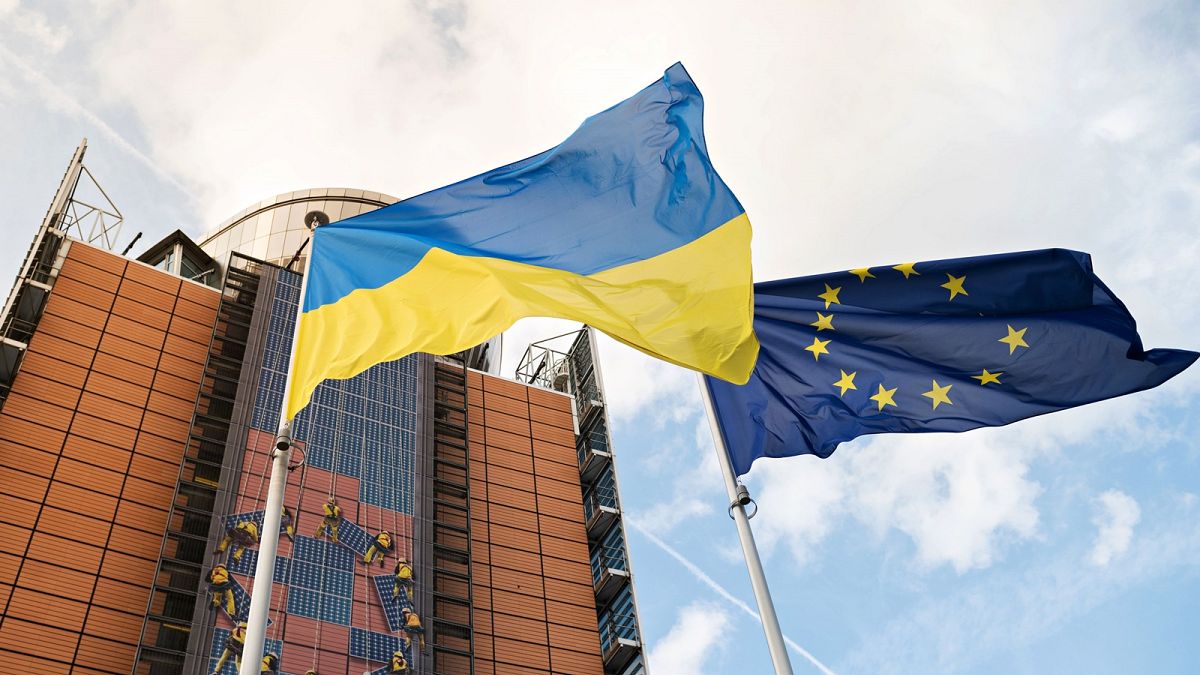The G7 has pledged to raise a $50 billion loan to support Ukraine in its battle against Russian forces, but the initiative is contingent on an agreement among the 27 members of the European Union. The plan involves utilizing Russia’s immobilized assets as collateral, with the majority of these assets held in the EU. While allies cannot seize the assets, they can use the generated interests to ensure the repayment of the loan. However, there are financial risks associated with this plan, mainly the possibility of the assets being unfrozen before repayments are complete, leading to allies being held accountable for default.
Under EU law, sanctions need to be extended every six months through unanimity, meaning that one country has the power to block the renewal and jeopardize the G7 plan. Hungary has often opposed decisions supporting Ukraine and is currently blocking military assistance to the country. To mitigate this risk, the European Commission proposed three options during an ambassadors meeting. These options include freezing assets for five years with an annual review, renewing sanctions on Russian assets every 36 months, and renewing all sanctions on Russia every 36 months. The second option garnered the most support among member states.
During the meeting, the European Commission’s chief of staff, Bjoern Seibert, presented the three options orally, with a formal proposal expected to be presented to member states in the coming days. The negotiations could potentially last for weeks as the EU works to finalize the agreement. The United States has been urging Brussels to expedite the process to ensure that the $50 billion loan reaches Ukraine before the end of the year due to the dire situation in the country after more than two years of conflict. However, the urgency has lessened following Vice President Kamala Harris replacing President Joe Biden as the Democratic nominee, raising hopes of continued American support to Ukraine.
The proposal to raise a $50 billion loan for Ukraine is a critical initiative by the G7 to provide support for the country facing Russian aggression. However, the success of this plan relies on an agreement among the 27 EU member states. The utilization of Russia’s immobilized assets as collateral presents financial risks, including the potential of these assets being unfrozen before the loan is repaid, holding allies accountable for default. The need for unanimity in extending sanctions every six months has raised concerns, with Hungary currently obstructing military assistance to Ukraine.
To address these challenges, the European Commission presented three options to member states during an ambassadors meeting. These options include freezing assets for five years with an annual review, renewing sanctions on Russian assets every 36 months, and renewing all sanctions on Russia every 36 months. The second option has received the most support from member states, indicating progress towards a consensus. The urgency to finalize the agreement has been emphasized by the United States, as they push for the loan to reach Ukraine before the end of the year to prevent a humanitarian crisis in the coming winter.
As negotiations continue and a formal proposal is expected to be presented to member states, the process could be lengthy and complex. The change in leadership in the US, with Vice President Kamala Harris now in place, has slightly eased the urgency surrounding the loan, with hopes for continued American support for Ukraine. Despite the challenges and risks associated with the G7 plan, the commitment to supporting Ukraine in its fight against Russian forces remains a top priority for Western allies. Through strategic planning and cooperation, the international community aims to provide the necessary assistance to Ukraine and ensure stability in the region.











